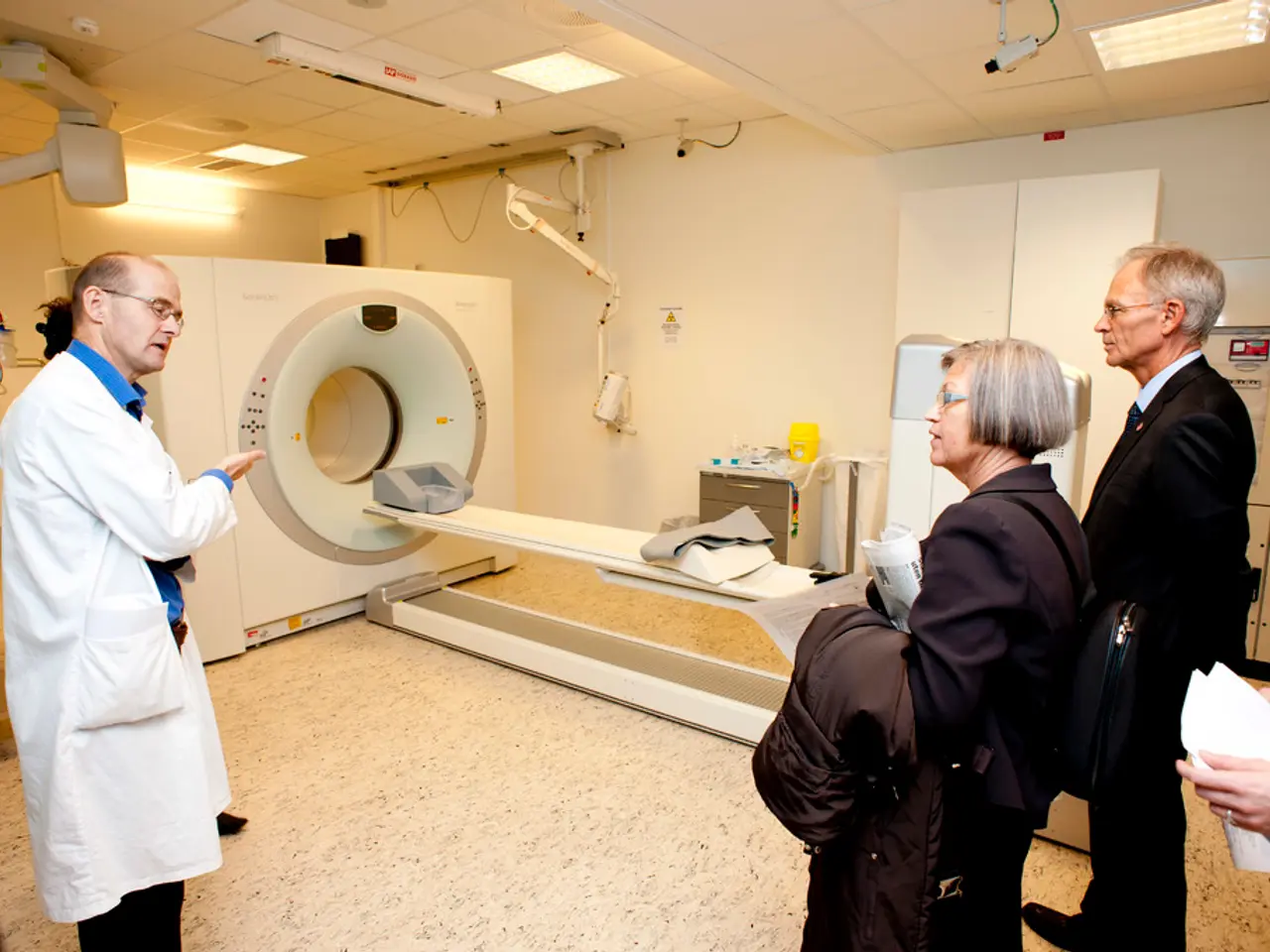Sensations of Prickling: Explanations and Signs
Goosebumps, the familiar bumps that appear on our skin in response to cold temperatures or intense emotions, are a common phenomenon that many of us have experienced. However, there are less common causes of goosebumps that go beyond the typical emotional or temperature-related responses.
One such cause is Multiple Sclerosis (MS), a condition that affects the central nervous system. Individuals with MS may experience goosebumps due to nerve damage and altered sensations. The damage to the myelin sheath can cause mixed signals to the brain, leading to unusual sensory experiences, including goosebumps when not cold[1].
Another less common cause of goosebumps is autoimmune conditions such as rheumatoid arthritis and lupus. These conditions can cause inflammation that might lead to chills or goosebumps, though this is less directly associated with goosebumps specifically[3].
Goosebumps can also be a symptom during menopause, although they are more commonly linked to hot flashes. Some individuals may experience chills during this transition, which can be accompanied by goosebumps[3].
In cases of low blood sugar, individuals might experience shivering or chills, which can sometimes be accompanied by goosebumps[3].
Goosebumps play an essential role in the body's ability to regulate its temperature. They occur when the arrector pili muscles contract, pulling hairs into an upright position. These muscles are smooth, involuntary muscles that a person cannot voluntarily contract[2].
While goosebumps are often associated with cold temperatures and emotional responses, they can also be a response to emotionally intense experiences such as fear, distress, or anxiety[4].
Interestingly, a small number of people may have the ability to voluntarily trigger goosebumps, although the cause is unknown and it does not seem to be learned through conditioning or training[6].
People who are anxious about their goosebumps or feel self-conscious may develop anxiety or worry about being judged[7]. If you experience unusual or worrisome goosebumps, it is essential to consult a doctor, as it may be a sign of a neurological, endocrine, or other systemic issue[5].
Certain drugs, like milnacipran hydrochloride and stimulants like methamphetamine, can cause goosebumps. Withdrawal from some drugs, such as opioids, may also cause goosebumps[5].
Goosebumps do not require treatment, but people can try to reduce their frequency by wearing warm clothing, avoiding drafts and heavy air conditioning, and remaining calm during stressful or emotionally intense situations[8]. Symptoms of goosebumps include bumpy skin, feeling cold, shaking or trembling, intense emotions, and other symptoms related to the cause.
Keratosis pilaris (KP), a skin condition that resembles goosebumps, is caused by dead skin cells clogging hair follicles. KP symptoms include bumpy skin, redness, itchiness, and dryness, but it is harmless[9]. Keratosis pilaris can be treated with regular moisturizing, chemical exfoliators, and laser treatment if other strategies do not work.
Postmortem goosebumps occur due to the rigor mortis process, where the arrector pili muscles stiffen along with other muscles.
In normal circumstances, goosebumps are involuntary, as they are caused by smooth muscles that cannot be voluntarily controlled[2]. Understanding the various causes of goosebumps can help us appreciate this fascinating bodily response in a new light.
[1] Multiple Sclerosis Trust. (2021). Sensory symptoms. Retrieved from https://www.mstrust.org.uk/a-z/sensory-symptoms [2] Healthline. (2021). What causes goosebumps? Retrieved from https://www.healthline.com/health/what-causes-goosebumps [3] Mayo Clinic. (2021). Goosebumps. Retrieved from https://www.mayoclinic.org/diseases-conditions/goosebumps/symptoms-causes/syc-20363205 [4] Verywell Health. (2021). Goosebumps: Causes, Symptoms, and Treatment. Retrieved from https://www.verywellhealth.com/goosebumps-causes-symptoms-and-treatment-4014687 [5] Healthline. (2021). Goosebumps: Causes, Symptoms, and Treatment. Retrieved from https://www.healthline.com/health/what-causes-goosebumps [6] Science Direct. (2021). Voluntary control of goosebumps: A case report. Retrieved from https://www.sciencedirect.com/science/article/pii/S2468024920300258 [7] Healthline. (2021). Goosebumps: Causes, Symptoms, and Treatment. Retrieved from https://www.healthline.com/health/what-causes-goosebumps [8] Mayo Clinic. (2021). Goosebumps. Retrieved from https://www.mayoclinic.org/diseases-conditions/goosebumps/symptoms-causes/syc-20363205 [9] Mayo Clinic. (2021). Keratosis pilaris. Retrieved from https://www.mayoclinic.org/diseases-conditions/keratosis-pilaris/symptoms-causes/syc-20353939
- Skincare products specifically formulated for sensitive skin can help alleviate the itchiness and redness caused by keratosis pilaris, a skin condition that resembles goosebumps.
- Mental health professionals may suggest relaxation techniques or stress management strategies for individuals who experience excessive anxiety or worry about their goosebumps, which can exacerbate the condition.
- Incorporating antioxidant-rich foods and nutrients in one's health-and-wellness routine could potentially aid in maintaining overall skin health and reducing the frequency of goosebumps.




